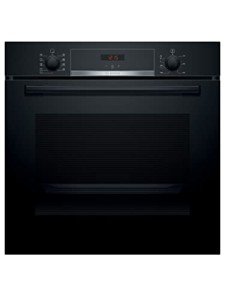The Rise of Built-In Ovens: A Seamless Approach to Modern Cooking
In modern kitchen areas, where design looks blend perfectly with performance, one device stands out as a true video game changer: the built-in oven. As homeowners and chefs alike continue to seek ingenious services that boost their cooking experience, built-in ovens have actually ended up being progressively popular. look here out the benefits, factors to consider, and patterns surrounding built-in ovens, highlighting why they are a necessary function in modern-day cooking areas.
What is a Built-In Oven?
A built-in oven is a cooking area home appliance created to be integrated into the cabinetry of a kitchen area rather than standing alone. Unlike traditional freestanding ovens, which can be moved and placed anywhere, built-in ovens come in numerous designs and sizes to fit particularly within designated areas. Offered in single or double setups, these ovens offer a streamlined appearance that matches modern-day cooking area designs.
Benefits of Built-In Ovens
1. Space-Saving Design
One of the most attractive benefits of built-in ovens is their space-saving design. By incorporating the oven into cabinetry, you can free up important counter and floor area. This is particularly advantageous in smaller cooking areas, where making the most of room is vital. Built-in ovens can be installed at eye level, making them more accessible and decreasing the need to bend down.
2. Visual Appeal
Built-in ovens add to a streamlined and cohesive cooking area style. Available in different surfaces-- such as stainless steel, black, white, and custom cabinetry-- they can mix perfectly into the total design. This visual appeal improves the kitchen's visual consistency and elevates the area, developing a modern-day and advanced atmosphere.
3. Enhanced Functionality
Numerous built-in ovens come geared up with sophisticated cooking technologies, such as convection cooking, steam ovens, and wise functions. These improvements allow for versatile cooking options, making it easier to accomplish professional-level results at home. Smart built-in ovens can even link to Wi-Fi, making it possible for users to control the oven from another location, receive notifications, and access a variety of cooking programs and recipes.
4. Enhanced Ventilation
Since built-in ovens can be integrated with kitchen hoods and ventilation systems, they can help preserve much better air quality and minimize cooking smells. This is specifically substantial for those who love to cook with fragrant spices and components, as an efficient ventilation system can keep the kitchen area comfortable and welcoming.
5. Modification Options
Built-in ovens use a large range of customization options to suit individual cooking styles and requirements. From professional-grade home appliances with numerous cooking modes to compact styles for smaller kitchen areas, homeowners can choose the oven that fits their particular requirements. Lots of producers likewise offer adjustable front panels, allowing you to match the oven's appearance to your cabinets for a really combined look.
Factors to consider When Choosing a Built-In Oven
While built-in ovens have many benefits, there are necessary factors to consider to remember before making a purchase:
1. Price
Built-in ovens typically come with a higher price than their freestanding equivalents due to their design and setup requirements. It's essential to aspect in both the expense of the oven and any additional expenditures connected to cabinetry adjustments or setup.
2. Setup Requirements
Installing a built-in oven typically needs professional support, particularly if you need to customize existing cabinets. Make sure that you think about any expenses connected with installation, consisting of labor and potential cabinets adjustments.
3. Size and Dimensions
Before acquiring a built-in oven, determine the designated space accurately to make sure a correct fit. Built-in ovens been available in various sizes and setups, so selecting one that aligns with your requirements and kitchen style is essential.

4. Way of life and Usage
Consider your cooking practices and requires when choosing a built-in oven. If you frequently host big gatherings, a double oven might be more advantageous. On the other hand, if you have a compact kitchen, a single-wall oven might be adequate.
Patterns in Built-In Ovens
The kitchen area device market is continually evolving, and built-in ovens are not exempt from emerging patterns. Some present patterns consist of:
Smart Technology Integration: With the rise of smart home innovation, built-in ovens now often include connectivity options. This permits users to monitor cooking progress and change settings via mobile apps.
integrated ovens and hobs : As sustainability ends up being a concern, many makers are investing in energy-efficient built-in ovens that minimize energy consumption while maintaining efficiency.
Multi-functional Designs: Built-in ovens now use features such as air frying, slow cooking, and steaming, supplying flexibility that meets a vast array of cooking methods.
Conclusion
Built-in ovens unquestionably represent a perfect blend of style, function, and benefit in today's kitchens. As more property owners opt for this modern-day solution, the focus moves to creating a cooking area that is as aesthetically pleasing as it is useful. Whether you are building a new home or redesigning your cooking area, considering a built-in oven could elevate your culinary experience and change your cooking area into an elegant and practical haven. With a variety of options readily available and continuous developments in innovation, built-in ovens remain a standout choice for both novice cooks and culinary lovers alike.
